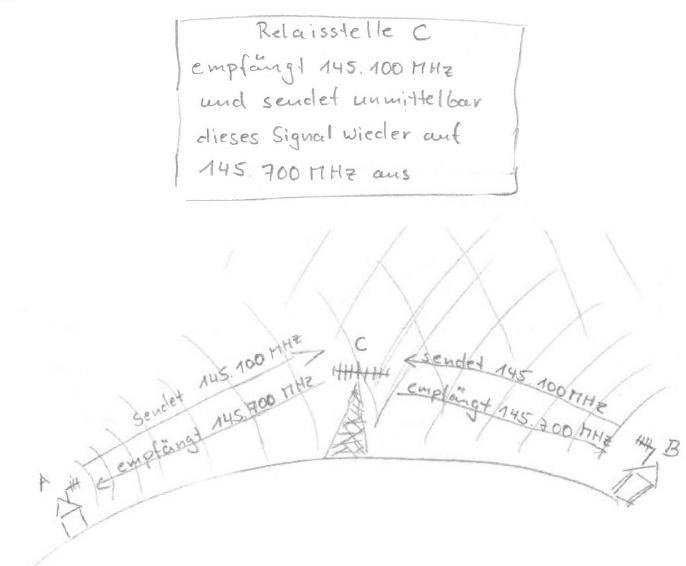Principle of relay stations
|
According to the "Verordnung zum Gesetz über den Amateurfunk" (Amateurfunkverordnung-AFuV) §14, relay stations are special amateur radio stations.
These remote controlled relay stations work all according the same principle.
They receive a certain frequency and transmit the signals immediately, usually on a higher frequency.
As shown in the picture below, for example station A transmit on 145.100 Mhz. For clear information transmitting, only one station can transmit at the same time, but the transmittes frequency by the relay station, can be recieved by a lot of stations. Modern transmitting and receiving systems (transciever) are able to switch to the lower offset frequency by transmitting and switch automatically back to the recieving frequency. The differences beween trasnmitting and recievieng frequency (shift) of Relay stations are standardized. The shift can by differ from band to band, but are usually identical in one band.

The great advanced of the relay stations are, that they will give a possibility of connections between stations, that would be otherwise difficult or impossible to establish.
For example, if stations are too far apart. By nearly optical propergation, both station can't recieved their signals without the relay station, like demonstrate in the illustation.
Also mobile radio stations with low transmitting power use the "amplification function" of a relay station, because they are usally installed in exposed locations and therefore are transmission disruption due to ground obstacles will be largely avoided.
|
Bibliography:
Hans Schwarz: Jahrbuch für den Funkamateur 2004, 2003, DARC Verlag, Bonn